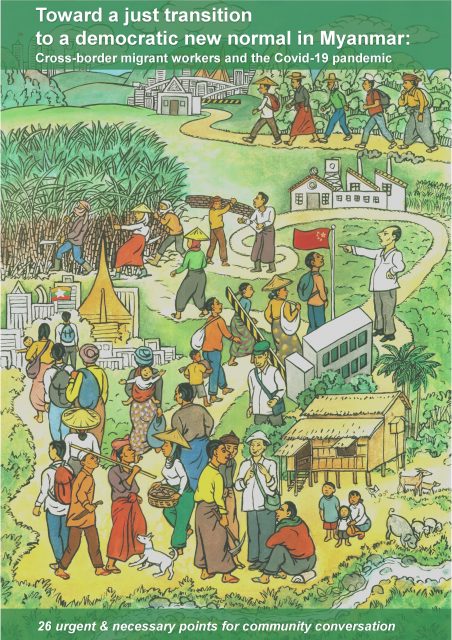Toward a Just Transition to a Democratic new Normal in Myanmar: Cross-border Migrant Workers and the Covid-19 Pandemic


26 urgent and necessary points for community conversation
Myanmar cross-border migrant workers overwhelmingly come from and are rooted in rural areas of the country; an estimated 5 million of them working mostly in Thailand, China and Malaysia, and have an estimated combined income remittance of up to US$8 Billion per year.
These cross-border migrant workers are very resourceful people. They find their jobs and get to their work sites on their own. They managed to come home amidst the global pandemic on their own. They stay alive largely on their own. Such experience reveals the great political agency of rural working people – their autonomy and capacity to understand and change their conditions. Will the rural working people of Myanmar be able to change the course, and construct their future according to their own conscious class and identity standpoint? That’s an open question. But ultimately, and paraphrasing one famous political economist, Myanmar working people make their history but not just as they please, not in the conditions of their own choosing, but under circumstances directly encountered and transmitted from the past.
In this short brief we move from what Covid-19 tells us about cross-border migrant labour originating in Myanmar, to more overall remarks about rural development and the entry of particular capital into the Myanmar countryside. We believe that this kind of basic knowledge will help in generating the appropriate public knowledge that is necessary in addressing the current crisis and toward building a post-pandemic new normal that is socially just. Our action research is being compiled into a detailed and lengthy study where life stories of cross-border migrant workers and social structures in and from the rural areas are front and center. The brief that follows here aggregates key highlights of that longer study. We invite readers to also read the full report, which will be available by the end of October 2020 in Burmese and English.

